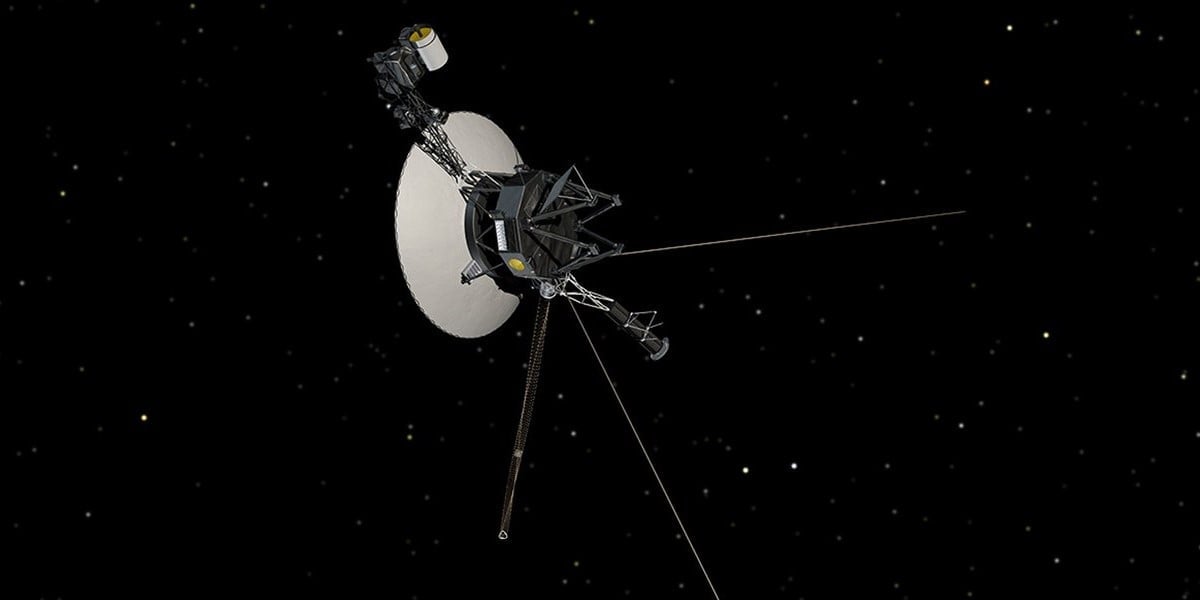Unbreakable Voyager space probes close in on a 50 year mission

NASA Space Technology
“We’re definitely going to make the 50th anniversary,” says Professor Garry Hunt, one of the scientists responsible for NASA’s Voyager mission, as Voyager 1 recovers from an unexpected pause in communications.
Launched when Jimmy Carter was President of the United States, the two Voyager spacecraft have endured almost half a century of spaceflight and, according to Hunt, should still be in contact with Earth in 2027, 50 years after leaving the planet.
A spokesperson for NASA’s Jet Propulsion Laboratory told The Register that the agency hopes there will be enough power from the onboard Radioisotope Thermoelectric Generators (RTGs) to keep the antenna and at least one science instrument running until the early 2030s.
The power produced by the RTGs is dwindling, and the Voyager team has been forced to make difficult decisions to eke out what remains. The plasma science instrument was recently turned off on Voyager 2, leaving four instruments operating on the probes.
Things are, however, starting to stack up a little for the hardy and well loved spacecraft. The small Voyager team at JPL managed to come up with a way to restore operations earlier this year after Voyager 1 began transmitting nonsense back to Earth. In September, engineers had to perform a delicate balancing act with the remaining power to warm the thrusters.
Voyager 2 has also endured its share of travails. In 2023, communication with the probe was inadvertently interrupted after its antenna was accidentally pointed away from Earth. The Deep Space Network (DSN) subsequently detected a carrier signal from the spacecraft.
On October 16, a command to turn on a heater resulted in Voyager 1 suddenly going silent, with its signal not being picked up by the DSN. NASA said, “While Voyager 1 should have had ample power to operate the heater, the command triggered the fault protection system.”
The Voyager flight team said it believed the fault protection system had lowered the rate at which the transmitter was sending back data. Confirming this, engineers found they were able to pick up the signal again and work out what had caused the upset.
That all went well until October 19, when communication from Voyager 1 appeared to stop completely. The theory was that the fault protection system had been triggered twice more, which meant Voyager 1 turned off the X-band transmitter in favor of the lower-powered S-band, which hadn’t been used to communicate with Earth since 1981.
The fault protection system is designed to protect the spacecraft’s health if something goes wrong. In this case, the something goes wrong part was “not enough power.” Hunt told us the system “overreacted” and took engineers by surprise.
- Voyager 1 regains sanity after engineers patch around problematic memory
- Dr Ed Stone, former director of JPL, Voyager project scientist, dies at 88
- NASA needs new ideas and tech to get Mars Sample Return mission off the ground
- Voyager 2 found! Deep Space Network hears it chattering in space
The Deep Space Network has been upgraded in the years since the launch of the Voyager probes, and Hunt cited those upgrades as a factor in engineers being able to detect the faint S-band signal from Voyager 1.
“It’s quite remarkable,” he told The Registerpaying tribute to the skills of the Voyager team. “We’re now seeing a new generation come in to keep Voyager going because the people who came in originally and built it have long retired.”
Indeed, the project scientist for the Voyager project, Ed Stone, passed away in June 2024 at the age of 88. A memorial for Stone is planned at JPL in December.
As for Voyager 1, since they regained contact with the probe, engineers are gathering data to restore it to normal operations.
While the team that designed and built the Voyager spacecraft loaded the probes with backups and redundancies, Hunt laughed, “It is getting a bit surprising…”
“Damn thing keeps going!” ®
Discover more from Tamfis Nigeria Lmited
Subscribe to get the latest posts sent to your email.



 Hot Deals
Hot Deals Shopfinish
Shopfinish Shop
Shop Appliances
Appliances Babies & Kids
Babies & Kids Best Selling
Best Selling Books
Books Consumer Electronics
Consumer Electronics Furniture
Furniture Home & Kitchen
Home & Kitchen Jewelry
Jewelry Luxury & Beauty
Luxury & Beauty Shoes
Shoes Training & Certifications
Training & Certifications Wears & Clothings
Wears & Clothings
















